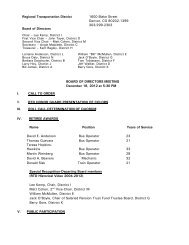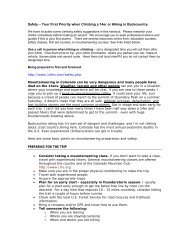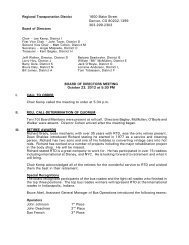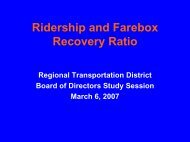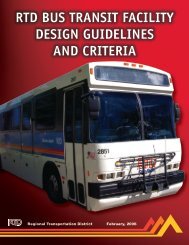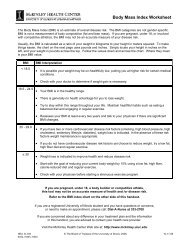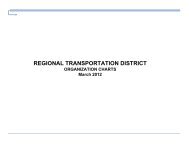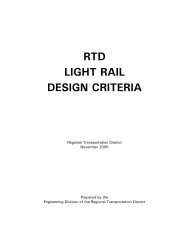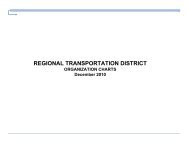Commuter Rail AC Electrification Load-Flow Simulation Report - RTD
Commuter Rail AC Electrification Load-Flow Simulation Report - RTD
Commuter Rail AC Electrification Load-Flow Simulation Report - RTD
You also want an ePaper? Increase the reach of your titles
YUMPU automatically turns print PDFs into web optimized ePapers that Google loves.
<strong>Commuter</strong> <strong>Rail</strong> <strong>AC</strong> <strong>Electrification</strong> <strong>Load</strong>-<strong>Flow</strong> <strong>Simulation</strong> <strong>Report</strong> Revision 1<br />
• Provision of hand-operated or motor-operated outdoor or indoor type bypass disconnect<br />
switch<br />
• Provision of a transfer bus and an additional circuit breaker which can substitute for any<br />
circuit breaker via the transfer bus<br />
The distribution system should be sectionalized into electrical sections to limit the length of the<br />
track to be de-energized following a fault or for system maintenance. The sectioning can be<br />
performed at substations, paralleling stations, and switching stations, as well as at interlockings<br />
where crossovers and turnouts are installed.<br />
3.5.2 Normal Operation<br />
During normal operation of the power system, i.e., when all major components of the system,<br />
such as substation transformers, feeders, and autotransformers, are in service, the system will<br />
maintain rated train operating performance during peak-hour traffic conditions. This includes<br />
providing full performance train voltage levels to allow simultaneous starting of trains.<br />
3.5.3 Contingency Operation<br />
Normally, each traction power transformer feeds its own section of system. During a substation<br />
transformer outage, continuity of supply to that section is achieved by closing of the substation<br />
feeder and catenary system bus-tie circuit breakers. The remaining substation transformer then<br />
feeds both sections of the system.<br />
Each traction power transformer in a substation is recommended to be supplied by an<br />
independent, dedicated transmission line. In this event, an outage of entire substation is<br />
unlikely. Nevertheless, provision for such a contingency should be made in the system design.<br />
Following an outage of an entire substation, the neighboring substations should maintain<br />
continuity of supply. Therefore, each substation must be capable of supplying its own section of<br />
the system as well as the adjacent sections previously supplied by the now outaged substation.<br />
This is facilitated at switching stations. During a substation outage, the normally open switching<br />
station feeder and catenary bus-tie circuit breakers are closed, thus extending the supply areas<br />
of the healthy substations in operation.<br />
When a substation at the end of the system is out-of-service, the end-of-the-line is supplied from<br />
the closest operating substation by closing bus-tie circuit breakers in the switching station and<br />
the outaged substation.<br />
02/27/2009 FRSC Page 12 of 250




